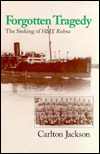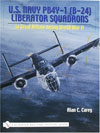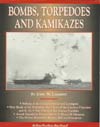Forgotten Tragedy
The Sinking of HMT Rohna
Jackson, Carlton
1997, United States Naval Inst.
ISBN 1557504024
Hardcover, 207 pages, photos
| Type. | General History |
| Pros. | First book to be published on this incident |
| Cons. | None to speak of |
| Rating. |  |
 In late November, 1943, a troopship carrying American soldiers was sunk in the Mediterranean. This marked the first successful German homing bomb used by aircraft against a shipping target. 1,015 Americans were killed in the sinking of HMT Rohna, representing the greatest loss of American lives at sea during World War II, and the second greatest naval disaster for the United States in that war (after the sinking of the USS Arizona at Pearl Harbor). 134 British and Australian officers and Indian crew also perished. Details of this sinking were long suppressed: during the war, to maintain security and prevent loss of morale; and after the war, supposedly to avoid embarrassing the British. This is the first book to recount the story, reconstructed from more than 100 letters written to the author by survivors.
In late November, 1943, a troopship carrying American soldiers was sunk in the Mediterranean. This marked the first successful German homing bomb used by aircraft against a shipping target. 1,015 Americans were killed in the sinking of HMT Rohna, representing the greatest loss of American lives at sea during World War II, and the second greatest naval disaster for the United States in that war (after the sinking of the USS Arizona at Pearl Harbor). 134 British and Australian officers and Indian crew also perished. Details of this sinking were long suppressed: during the war, to maintain security and prevent loss of morale; and after the war, supposedly to avoid embarrassing the British. This is the first book to recount the story, reconstructed from more than 100 letters written to the author by survivors.
The bomb hit the Rohna on the port side aft the funnel, and then traveled through some distance before exploding on its delayed fuse, opening a hole in the starboard side of the ship near the waterline. At first there was confusion as to the state of the ship, and whether it was necessary to abandon. In fact, she was going down fast, afire, and sank within the hour. The survivors' experiences of the blast and the ensuing fire, of narrow escapes and the struggle in the water, and finally of rescue (606 were recovered by USS Pioneer, 300 by other vessels) and transport to North African ports, are interspersed chronologically in the narrative with the actions of the German bombing force.
The book begins with some background on the mission of the men of the 853rd Engineering Battalion (who constituted the majority of the troops on board), which was to construct runways and hangars for B-29s in India; as well as their training in US camp and journey in convoy from Newport News to Oran, Algeria, where they landed on 23 October, 1943. There they stayed for a month, camped in the desert, waiting for something to happen. When a convoy was finally assembled, their route was to cross the Mediterranean, continue through the Suez Canal and the Red Sea, to the Indian Ocean and thence to Bombay.
Details of the career of the Rohna, which was constructed in 1926 as a merchant vessel, as well as a plan of the ship, are provided. The author additionally explains the guided bomb, how it worked, and the procedures for launching it, as recounted by Hans Dochtermann, the pilot of the Heinkel 177 plane which released the bomb. Dochtermann also clarified details of the attack itself. While it is true that for some reason the Rohna was the only ship of the convoy not flying barrage balloons, it seems she was not the intended target. After two waves of bombing which followed each other in quick succession, and during which German planes were engaged by RAF, Dochtermann turned back and aimed at the "largest ship" in the convoy, which would have been the Orion. The technology of the time required that he aim and guide the bomb by line of sight, and the delay before explosion was so long that he at first believed the bomb had missed the convoy completely. As it happened, the intended target escaped harm, and the Rohna was hit instead.
Reading this book, the reader may be struck by the many similarities between the cases of the Rohna and of the S.S. Leopoldville. Both sinkings involved great loss of life of U.S. troops and occurred within one day of a major American holiday (Thanksgiving 1943 for the Rohna, Christmas 1944 for the Leopoldville). Both were aging vessels converted from their peacetime purpose into troop transports; both struck doubt into the hearts of boarding troops with their decrepit appearance. In both cases, the conditions on board were described as unfit for human habitation, and the food as inedible and even unidentifiable. In both cases, some troops were lucky enough to be embarked and then disembarked from the fatal vessel. In both cases, no blame was attached to the attacker in the minds of the victims; they agreed he was simply doing his job. In both cases, troops were insufficiently trained in abandon ship procedures, lifeboat launching, and use of life jackets, which oversights contributed greatly to mortality; and on both vessels, the crew saved themselves, abandoning the troops and officers to their fates. In both cases, news stories in major U.S. newspapers revealed that a troop transport had been sunk with great loss of life, but did not supply date, place or ship name due to wartime security concerns. In both cases, to this day many relatives do not know how their loved ones died.
While the similarities are many, differences of course also exist. The U-boat which sank the Leopoldville was lost with all hands a few months later; while the pilot (Hans Dochtermann) of the plane which bombed the Rohna survived the war and contributed to this book. In the Rohna's case, the order to abandon ship was given (no such order was given on the Leopoldville); the ship sank much faster, having been damaged more badly, and was aflame; rescue began much faster, and the temperature of the water in the Mediterranean was warmer than that of the English Channel, which was an advantage for survival. However, the rescue of Rohna survivors was hampered by repeated German strafing runs. Finally, while the U-boat attack took the men on the Leopoldville by surprise, the men on the Rohna watched the two bombing raids on the convoy from the deck of their vessel.
This is really a commendable book: clearly written, it follows the action on both sides without confusing the reader, and the accounts of survivors are truly gripping.
Review written by Tonya Allen.
Published on 22 Mar 2000.
This title is highly recommended.
Purchase information: (info) Get Forgotten Tragedy now at amazon.co.uk
Get Forgotten Tragedy now at amazon.co.uk
Return to our main review page.



